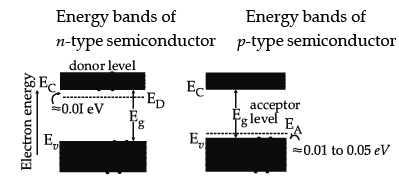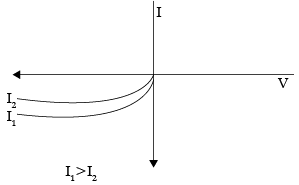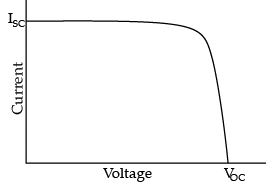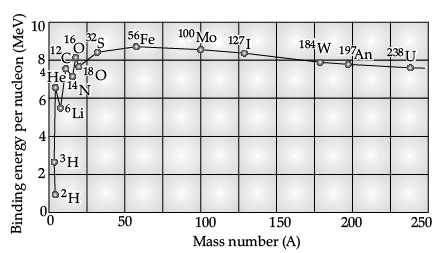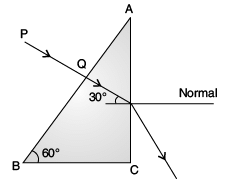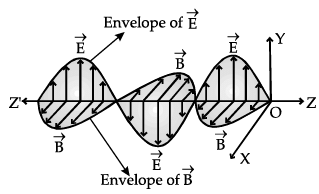Class 12 Physics: CBSE Sample Question Paper- Term II (2021-22)- 2 | Sample Papers for Class 12 Medical and Non-Medical PDF Download
| Table of contents |

|
| Class-XII |

|
| Time: 120 Minutes |

|
| Max. Marks: 35 |

|
| Section - A |

|
| Section - B |

|
| Section - C |

|
Class-XII
Time: 120 Minutes
Max. Marks: 35
General Instructions :
- There are 12 questions in all. All questions are compulsory.
- This question paper has three sections: Section A, Section B and Section C.
- Section A contains three questions of two marks each, Section B contains eight questions of three marks each, Section C contains one case study-based question of five marks.
- There is no overall choice. However, an internal choice has been provided in one question of two marks and two questions of three marks. You have to attempt only one of the choices in such questions.
- You may use log tables if necessary but use of calculator is not allowed.
Section - A
Q.1. Draw energy band diagrams of n-type and p-type semiconductors at temperature T > 0 K. Mark the donor and acceptor energy levels with their energies.
Q.2. A hydrogen atom in the ground state is excited by an electron beam of 12.5 eV energy. Find out the maximum number of lines emitted by the atom from its excited state.
OR
Why is wave theory of electromagnetic radiation not able to explain photoelectric effect? How does photon picture resolve this problem?
Calculation of energy in excited state
Formula
Finding out the maximum number of lines.
Energy in ground state, E1 = –13.6 eV
Energy supplied = 12.5 eV
Energy in excited state, –13.6 + 12.5 = –1.1 eV
But, En = (-13.6)/(n2) = 1.1 eV
n = 3
Maximum number of lines = 3
OR
Reason for inability of E.M. theory
Resolution through photon picture
The explanation based on e.m. theory does not agree with the experimental bservations (instantaneous nature, max K.E. of emitted photoelectron is independent of intensity, existence of threshold frequency) on the photoelectric effect.
[Note: Do not deduct any mark if the student does not mention the relevant experimental observation or mentions any one or any two of these observations].
The photon picture resolves this problem by saying that light, in interaction with matter behaves as if it is made of quanta or packets of energy, each of energy hv. This picture enables us to get a correct explanation of all the observed experimental features of photoelectric effect.
[Note: Award the first mark if the student just writes “As per E.M. theory, the free electrons at the surface of the metal absorb the radiant energy continuously, this leads us to conclusions which do not match with the experimental observations”].
Also award the second mark if the student just writes “The photon picture give us the Einstein photoelectric equation Kmax (= eV0) = hn – φ0)
which provides a correct explanation of the observed features of the photoelectric effect.
Q.3. (a) Why is a photo diode operated under reverse bias condition?
(b) Draw V-I characteristic curves of photodiode for incident light of intensities I1 and I2 (I1 > I2).
(a) Photodiodes conduct in reverse biased condition only when a light of suitable frequency is incident on it. During reverse bias, the current is mainly due to the drift of minority charge carriers crossing the junction. The variation in intensity of light affects the minority charge carriers concentration and hence the reverse current is predominant. In forward bias condition, the change in majority charge carriers is not much affected by light intensity and hence the forward current variation is not so predominant.
Hence, photodiodes are operated in reverse bias condition.
(b)
Section - B
Q.4. (a) Explain briefly how Rutherford scattering of a-particle by a target nucleus can provide information on the size of nucleus.
(b) Show that density of nucleus is independent of its mass number A.
(a) Many of the a-particles pass through the foil. A few particles deflect by more than 90° angle.
Rutherford argued that to deflect the α-particles backward, it must experience a large repulsive force.
It shows that most of the part of an atom is the empty space and its positive charge is concentrated tightly at its centre and its size is very small as compared to the size of atom.
(nearly (1/10,000) to (1/1,00,000) times the size of atom)
Alternatively,
In Rutherford experiment, the calculation of distance of closest approach provides information about the size of the nucleus.
Let K be the initial kinetic energy of the alpha particle.
At the distance of closest approach
∴
(b) Radius of the nucleus of mass number A, R = R0A1/3, where, R0 is constant.
Volume of the nucleus,
V = (4/3)πR3i.e., independent of mass number A.
Q.5. What is a solar cell ? Draw V-I characteristics. Explain the three processes involved in the working.
Solar cell: A solar cell is an electrical device that converts the energy of light directly into electricity by the photovoltaic effect. Solar cell is a p-n junction fabricated from silicon. The energy conversion consists of absorption of light (photon) energy producing electron–hole pairs in the p-n junction and charge carrier separation.
I-V Characteristics:
VOC: This is the maximum voltage that the PV array provides when the terminals are not connected to any load (an open circuit).
ISC: The maximum current provided by the PV array when the output connectors are shorted together (a short circuit condition).
Working of solar cell: A solar cell is a junction of n-type silicon and p-type silicon.It generates electricity by using sunlight to make electrons move across the junction between the different types of silicon:
- When sunlight shines on the cell, photons bombard the upper surface.
- The photons carry their energy from n-type layer to p-type layer through p-n junction of the cell.
- The photons transfer their energy to electrons in the p-type layer.
- The electrons use this energy to move across the barrier into the n-type layer and flow out into the circuit.
- This flow of electrons through the circuit gives rise to flow of current in the external circuit.
Q.6. Draw the curve showing the variation of binding energy per nucleon with the mass number of nuclei. Using it explain the fusion of nuclei lying on ascending part and fission of nuclei lying on descending part of this curve.
From the graph, it is clear that it has a peak near A = 60. Nuclei around this are most stable.
(Example : Iron)
The shape of this curve suggests two possibilities for converting significant amounts of mass into energy :
(i) Fission reactions: From the curve, the heaviest nuclei are less stable than the nuclei near A = 60. This suggests that energy can be released if heavy nuclei split apart into smaller nuclei. This process is called fission.
(ii) Fusion reactions: The curve also suggests energy can be released from the lighter elements (like hydrogen and helium) as they are less stable than heavier elements up to A~60. Thus, sticking two light nuclei together to form a heavier nucleus can also release energy. This process is called fusion.In both fission and fusion reactions, the total masses after the reaction are less than those before. This “missing mass” appears as energy.
Q.7. Define the term, “refractive index” of a medium. Verify Snell’s law of refraction when a plane wave front is propagating from a denser to a rarer medium.
Definition of the refractive index
Verification of laws of refraction
The refractive index of medium 2, with respect to medium 1 is equal to the ratio of the sine of angle of incidence (in medium 1) to the sine of angle of refraction (in medium 2).Alternatively,
Refractive index of medium 2 w.r.t. medium
n21 = sin i/sin r
Alternatively,
Refractive index of medium 2 w.r.t. medium
n21 = velocity of light in medium 1/velocity of light in medium 2The figure drawn here shows the refracted wave front corresponding to the given incident wave front.
It is seen that
∴
This is Snell’s law of refraction.
Q.8. A symmetric biconvex lens of radius of curvature R and made of glass of refractive index 1.5, is placed on a layer of liquid placed on top of a plane mirror as shown in the figure. An optical needle with its tip on the principal axis of the lens is moved along the axis until its real, inverted image coincides with the needle itself. The distance of the needle from the lens is measured to be x. On removing the liquid layer and repeating the experiment, the distance is found to be y. Obtain the expression for the refractive index of the liquid in terms of x and y.
OR
(a) Draw a labelled ray diagram of an astronomical telescope in the near point adjustment position.
(b) A giant refracting telescope at an observatory has an objective lens of focal length 15 m and an eyepiece of focal length 1.0 cm. If this telescope is used to view the moon, find the diameter of the image of the moon formed by the objective lens. The diameter of the moon is 3.48 × 106 m and the radius of lunar orbit is 3.8 × 108 m.
Lens maker ’s formula
Formula for ‘combination of lenses’
Obtaining the expression for m
(a) Let μ1 denote the refractive index of the liquid. When the image of the needle coincides with the lens itself; its distance from the lens, equals the relevant focal length.With liquid layer present, the given set up is equivalent to a combination of the given (convex) lens and a concave plane/plano concave liquid lens’.
We have
and
As per the given data,
= 1/R∴
= 1/R
∴
or,
OR
(a)Magnifying power of telescope, m = f0/fe
or, m = β/α(b) Here, fo = 15 m, fe = 1.0 cm = 0.01 m
∴ m = 15/0.01 = 1500.
Let D be diameter of Moon, d be diameter of image of moon formed by objective and r be the distance of Moon from objective lens then from figure.
D/r = d/f0
⇒ (d = D/r).f0
= 0.137 m
= 13.7 cm.
Q.9. In case of photoelectric effect experiment, explain the following facts, giving reasons.
(a) The wave theory of light could not explain the existence of the threshold frequency.
(b) The photo electric current increases with increase in the intensity of incident light.
(a) Since energy of the wave is dependent on the square of its amplitude, the classical wave theory predicts that if sufficiently intense light is incident, the electrons would absorb that energy to escape. There should not be any threshold frequency for the emission of electrons from metal’s surface due to incident light.
(b) According to classical wave theory, if intensity of light increases, the kinetic energy of an ejected electron will increase. This is because the greater the intensity of light, the larger the energy of the light wave striking the metal surface, so electrons are ejected with greater kinetic energy. However, it cannot explain the increase of number of ejected electrons i.e. the increase of photoelectric current, with the increase in intensity of incident light.
Q.10. (a) How does the angle of minimum deviation of a glass prism vary, if the incident violet light is replaced by red light ? Give reason.
(b) A ray PQ incident normally on the refracting face BA is refracted in the prism BAC made of material of refractive index 1.5. Complete the path of ray through the prism. From which face will the ray emerge ? Justify your answer.
(a) Since, δm = (n21 – 1)A. Hence, larger the refractive index, larger will be the deviation. As refractive index of glass for violet is more than the refractive index of glass for red, so the deviation will decrease if the incident violet light is replaced by red light.
(b) Path of emergent ray
Naming the face
Justification
Face-AC
Here ic = sin–1(2/3) = sin–1(0.67)
∠i on face AC is 30° which is less than ∠ic. Hence the ray get retracted here.
Q.11. How does a charge q oscillating at certain frequency produce electromagnetic waves?
Sketch a schematic diagram depicting electric and magnetic fields for an electromagnetic wave propagating along the Z-direction.
OR
(a) If one of two identical slits producing interference in Young’s experiment is covered with glass, so that the light intensity passing through it is reduced to 50%, find the ratio of the maximum and minimum intensity of the fringe in the interference pattern.
(b) What kind of fringes do you expect to observe if white light is used instead of monochromatic light?
When the charge accelerates, then there will be change in electric and magnetic fields with respect to space and time which generates electromagnetic waves. So we see that an accelerated charge will give electromagnetic waves.
In an oscillatory L-C circuit, a charge oscillates across the capacitor plates. This oscillating charge has a non-zero acceleration; hence it emits electromagnetic waves of frequency same as that of the oscillating charge.
The figure shows the graphical representation of an electromagnetic wave where the electric field vector
and the magnetic field vector
are vibrating along Y and X-directions respectively, and the wave is propagating along Z-direction. Both
vary with time and space and have the same frequency.
Direction of Propagation:
OR
(a) Finding the (modified) ratio of the maximum and minimum intensities
(b) Fringes obtained with white light
(a) After the introduction of the glass sheet (say, on the second slit),
we have I2/I1 = 50% = 1/2
∴ Ratio of the amplitudes
Hence
(b) The central fringe remains white.
No clear fringe pattern is seen after a few (coloured) fringes on either side of the central fringe.
Note: For part (a) of this question, The student may
(i) Just draw the diagram for the Young’s double slit experiment.
OR
(ii) Just state that the introduction of the glass sheet would introduce an additional phase difference and the position of the central fringe would shift.
For all such answers, the student may be awarded the full (2) marks for this part of this question.
Section - C
Q.12. Case Study: Microwave oven
The spectrum of electromagnetic radiation contains a part known as microwaves. These waves have frequency and energy smaller than visible light and wavelength larger than it. What is the principle of a microwave oven and how does it work ? Our objective is to cook food or warm it up. All food items such as fruit, vegetables, meat, cereals, etc., contain water as a constituent. Now, what does it mean when we say that a certain object has become warmer? When the temperature of a body rises, the energy of the random motion of atoms and molecules increases and the molecules travel or vibrate or rotate with higher energies. The frequency of rotation of water molecules is about 2.45 gigahertz (GHz). If water receives microwaves of this frequency, its molecules absorb this radiation, which is equivalent to heating up water. These molecules share this energy with neighbouring food molecules, heating up the food. One should use porcelain vessels and non metal containers in a microwave oven because of the danger of getting a shock from accumulated electric charges. Metals may also melt from heating. The porcelain container remains unaffected and cool, because its large molecules vibrate and rotate with much smaller frequencies, and thus cannot absorb microwaves. Hence, they do not get eaten up. Thus, the basic principle of a microwave oven is to generate microwave radiation of appropriate frequency in the working space of the oven where we keep food. This way energy is not wasted in heating up the vessel. In the conventional heating method, the vessel on the burner gets heated first and then the food inside gets heated because of transfer of energy from the vessel. In the microwave oven, on the other hand, energy is directly delivered to water molecules which is shared by the entire food.
(a) As compared to visible light microwave has frequency and energy:
(i) more than visible light.
(ii) less than visible light.
(iii) equal to visible light.
(iv) Frequency is less but energy is more.
(b) When the temperature of a body rises then:
(i) the energy of the random motion of atoms and molecules increases.
(ii) the energy of the random motion of atoms and molecules decreases.
(iii) the energy of the random motion of atoms and molecules remains same.
(iv) the random motion of atoms and molecules becomes streamlined.
(c) The frequency of rotation of water molecules is about:
(i) 2.45 MHz.
(ii) 2.45 kHz.
(iii) 2.45 GHz.
(iv) 2.45 THz.
(d) Why should one use porcelain vessels and non-metal containers in a microwave oven ?
(i) Because it will get too much hot.
(ii) Because it may crack due to high frequency.
(iii) Because it will prevent the food items to become hot.
(iv) Because of the danger of getting a shock from accumulated electric charges.
(e) In the microwave oven.
(i) energy is directly delivered to water molecules which is shared by the entire food.
(ii) the vessel gets heated first, and then the food grains inside.
(iii) the vessel gets heated first and then the water molecules collect heat from the body of the vessel.
(iv) energy is directly delivered to the food grains.
(a) Option (ii) is correct.
Explanation: Microwaves have frequency and energy smaller than visible light and wavelength larger than it.
(b) Option (i) is correct.
Explanation: When the energy of the random motion of atoms and molecules of a substance increases and the molecules travel or vibrate or rotate with higher energies, the substance becomes hot.
(c) Option (iii) is correct.
Explanation: The frequency of rotation of water molecules is about 2.45 GHz.
(d) Option (iv) is correct.
Explanation: One should use porcelain vessels and non-metal containers in a microwave oven because of the danger of getting a shock from accumulated electric charges. Metals may also melt from heating. The porcelain container remains unaffected and cool, because its large molecules vibrate and rotate with much smaller frequencies and thus cannot absorb microwaves. Hence, they do not get heated up.
(e) Option (i) is correct.
Explanation: In the conventional heating method, the vessel on the burner gets heated first and then the food inside gets heated because of transfer of energy from the vessel. In the microwave oven, on the other hand, energy is directly delivered to water molecules which is shared by the entire food.
|
159 docs|4 tests
|

